PCT clothing review
What do you wear to walk 2669 miles?
Anything!
(Nothing, if it’s the summer solstice…)
I wore 4 different shirts, 2 pairs of shorts, 4 different hats, and 5 pairs of shoes over the course of my 160 day PCT thru-hike. Some of it was great, and some did not work for me AT ALL. In this post, I’ll review everything I wore from Campo to Manning Park.
If something sounds like it would work for you, give it a try!
Or don’t.
Each and every hiker has different preferences, and one person’s favorite item could be another person’s biggest hate. The purpose of this PCT clothing review is to let you know this one hiker’s likes and hates, and perhaps in the process give you ideas for where to start your research.
Preferences aside, it’s good to remember that clothing is gear on the trail — wear the wrong garb and you could freeze, burn, or get scratched up by ice or brambles. That being said, it’s up to you to figure out what is right for you. The only real guideline is I’ll give is, no cotton. For reals. You will be sweating for like, 2668 miles of the 2669 mile trail, and you don’t want a material that makes you colder when it’s wet.
Because I like doing research, I spent many hours picking out the “right” clothes for the trip. This did me well for the beginning, but honestly, I ended up changing almost everything in my pack, including my clothes. It was comical halfway through the hike, when I had 10 short minutes on wi-fi to find and buy a replacement, remembering how much thought I’d put into the original item before the trail.
You too may have to throw out all your carefully done research and just get whatever is available in whichever town you’re in. Or you might never change anything. That’s the nature of the beast that is the Pacific Crest Trail.
With that in mind, here are the garments that accompanied me on the PCT this summer:
Disclaimer: Each item in this review was purchased by me with my own money, or given as a gift. I am not repping any brand here, just sharing the ones that worked for me.
On my body
Shirts
I started the hike in a 150 gm merino wool Icebreaker Flash Short Sleeve V-neck t-shirt. It breathed well, didn’t rub raw patches into my skin, and didn’t have seams on the tops of the shoulders for the backpack straps to chafe on. It also stained quickly and severely, and like most thin merino wool, shredded where it rubbed. By the time I got to Bishop at mile 789, I was ready for a new, hole-less shirt. Because I hadn’t planned to swap shirts there, I just went to the outfitters in town and found one on sale for ~$20.
The Rab Aeon Tee (short sleeve) is 100% polyester with a high neck, two traits I had avoided pre-hike. By that point I had noticed that the folks wearing polyester shirts didn’t look nearly as dirty as I did in my light thin merino wool, though, and didn’t notice a smell problem with the poly. I wore this short from Bishop all the way to Northern California when I jumped off-trail for a week. I loved it, and returned to it to finish out the trail. The non-v-neck stopped the progress of the chest tan-line, and the smooth fabric didn’t chafe in the slightest.
When I got back on trail in Northern California, I took the opportunity to swap out gear, and switched my top to a thicker merino wool shirt that I already owned: the Icebreaker Tech Lite T-shirt (short sleeve). This shirt was also 150 gm merino wool, but I think I thought it was thicker (and therefore more durable) because of the slubby texture of the material.
(Noticing a color theme here? I may have gotten swept up in the idea of looking like a penguin… er, penguin’s habitat?)
Within a week of hiking again in this shirt, I developed saddle sores under my pack on both sides. I chalked it up to hiking through a hot sweaty area (Mt. Shasta and north), and kept going. Feeling the sores crack when I bent over was painful, to say the least, and they took a long time to heal; I still have faint scars. As I hiked into Oregon, I started feeling like the slightly nubby texture of the shirt was exacerbating the rawness of my lower back. By the time I got to Bend, the shirt had developed holes in the back, so I looked for a new one at the REI there.
I hoped to get some sort of polyester print long sleeve button-down, and found the Royal Robbins Light Expedition 3/4-Sleeve shirt. By the time I had hiked to Timberline Lodge, I hated the thing.
I must have been high on Town Fumes or something when I bought it, ’cause it was just fugly. It might have looked better in the store, but on the trail I felt like a frump monster, and believe me — the PCT is no fashion show. No one gives a fuck — I didn’t give a fuck, except about that shirt. Anyway, the texture was so smooth that it felt slimy when sweaty, which is All The Time when thru-hiking. I requested a change in my next resupply box, and picked up the Rab polyester t-shirt in my Trout Lake box, then wore it happily to the border.
The Verdict: Next time, I would look for a lightweight long-sleeve polyester shirt to wear from the start, certainly through the desert, or go with the Rab Aeon Tee again. That shirt was fast drying with a smooth weave and SPF 30, didn’t stain or tear, and was always comfortable. Smell was never an issue. A way to vent would be nice (hence considering a button-down next time), but all in all, this was a great shirt.
Shorts
I didn’t bring a single pair of real pants on the PCT. I had fallen in love with wearing running shorts to hike in during my 2013 JMT trip, and knew I’d repeat it on the PCT. I even hunted down the current version of my 2009 running shorts — the Oiselle Distance Short. My legs get hot when hiking, and having them bare was a great way to keep them cool. For sun protection, I wore sunscreen religiously for the first 900 miles of the hike, and on and off after that point.
These shorts have a zip side pocket, which was handy for carrying a pocket knife, or ID in town, plus another in the back which I didn’t use due to its placement directly below my pack. The crotch seam started to go after the Sierra, and I sewed it up in Lake Tahoe. They did get stains, but I didn’t really mind, except for the sap stain directly below my crotch that never came out that made it look like I had always just pissed myself…
Sadly, the seam on the shorts went out again in Oregon, and I started flashing people. I had been admiring other hikers’ Spandex shorts for a while, and though I didn’t have the chafe they are usually worn to deal with, I decided to get a pair of those to finish out the trail.
(I had brief issues with chafe in Southern California, but it went away the day I bought Vagisil to treat it. Go figure.)
I was hoping for mid-to-lower-thigh-length shorts, but the Bend REI only had two lengths: super short, and past the knee. With my propensity to overheat through my legs, I opted for the short (super short!) version: the Lucy Hatha Short with 3″ inseam. There was a cheaper version from REI, but the fit of the Lucy shorts felt significantly better.
From Bend on, I wore the short shorts — I called them my booty shorts — and I loved them. They fit my hips, butt, and thighs great, didn’t ride up or sag, and I never got chafe wearing them. Somewhere in Washington, I stopped wearing underwear under them, and they never retained a smell.
Pants-less hiking ftw!
The only real downside of these shorts is that I was a bit self-conscious of their length (or lack thereof) off the trail. I ended up wearing my rain pants over them when I was in town or hitchhiking. Otherwise, I was never too cold, and crucially, never overheated. Now, after ~700 miles of hiking, they show barely any wear; no seam problems, stains or tears.
The verdict: I would hike the trail in Spandex shorts like the Lucy Hatha Short next time, though perhaps slightly longer (6-8″ inseam?).
Underpants
I started out with two pairs of merino wool Ibex Balance Briefs, swapping them daily and washing them. I love these underpants. They don’t feel too smooth and smell weird like Ex-Officios, and they are thick enough to be durable without being clunky. Added bonus — they are seamless and tagless.
My issue with these panties was with my choice of colors: Solar blue and avocado green. I wanted to have cheerful colors to boost my trail morale, but the light colors ended up getting real stained real fast. Butts sweat A LOT, and there’s dirt everywhere on the whole trail, and particularly in SoCal, so by the time I got to swimmable bodies of water in the Sierra, the original colors were barely visible. I picked up a pair of (0ld, discontinued) black Icebreaker merino wool panties in Bishop so I’d have less gross undies for swimming.
These worked well, but, like other 150 gm merino wool on the trail, got holes immediately. Once I ripped a hole in them, with my thumb, while putting them on. I don’t know about you, but I don’t want my panties to be as delicate as tissue paper. I eventually sent home one of the Ibex pairs, then threw out the torn Icebreakers.
As I mentioned earlier, at some point in Washington I got tired of doing laundry and started going commando. This was fantastic, and I highly recommend it. I still carried one pair of panties for period or emergencies, but wore just the booty shorts the bulk of the time.
The verdict: On a do-over, I would bring one pair of black Ibex Balance Briefs to use on my period, and go commando the rest of the time.
Bra
This was probably the most-researched piece of clothing I wore on the trail. I had worn synthetic material bras on my JMT section hike in 2012 and complete JMT hike in 2013, and was unsatisfied with both. I wanted to find a wool bra for the PCT since I’d been so happy with my wool panties, but spent the spring before the PCT searching high and low without success. I tried the Ibex offerings — Balance Sports Bra and Balance Bralette — but those didn’t work for my frame. The bralette would ride up, and the sports bra was too tight.
I finally resigned myself to a synthetic bra, and boy! am I glad I did. I found a recommendation for Patagonia’s Barely Everyday Bra, and found one in black that turned out to be PERFECT for me. It’s a polyester/Spandex blend, doesn’t have any clasps or adjustment hardware (= less to chafe), and has gathering in the front to take a teensy step away from the loaf look of most sports bras.
The downside to this bra, and upside, is that it is very thin. This means that A) it dries super quickly after sweating or swimming, and B) if you’re anything like me, you’ll be nipping out in any and all trail photos.
Shrugs. WORTH IT.
The Verdict: Definitely the Patagonia Barely Everyday Bra again. Full disclosure: I am still wearing this bra near daily at home, almost 4 months post-trail. It has zero signs of wear and no smell. Great quality.
Socks
Heavy hiking socks make my feet sweat, and tall socks make my leg hair hurt when it’s long enough, so I knew I wanted short, lightly padded socks for the PCT. I started in Smartwool’s PhD mini light running socks and Injinji wool toesocks. I got a lot of blisters quickly in the desert, and hiker-boxed the toesocks when I got to Agua Dulce.
I have a longer second toe (Morton’s toe) which I would guess contributed to the toesocks never feeling good. Whatever the cause, I had blisters between several of my toes, and the toesocks rubbing on those was super uncomfortable, so I went back to open toe-box socks, and never looked back.
The Smartwool socks were basically fine, but they would get holes easily, usually in the back of the heel first, then over a few toes. I got a pair of Darn Tough socks in Agua Dulce, and this review can just stop there — they’re the best, go buy some now. They will get holes eventually, but it can take 1000 miles, and the company will replace them for free if you mail them in.
I got whichever style was available at the Northridge REI, which was the Darn Tough 1/4 Cushion Hiking Sock, and that style worked great for me. I picked up a second pair in Tahoe, and from there didn’t replace socks until my friend brought me new Darn Toughs at Snoqualmie Pass.
I used two pairs of socks for most of the trail, on a “wear one, wash one” cycle. When I stopped washing, I just wore the first pair for two days, then the second for the remaining days until town. When I got to Kennedy Meadows, I added a pair of taller Darn Tough Micro Crew Cushion socks for sleeping through the Sierra, and kept them until Tahoe. I brought them back in Washington at Snoqualmie Pass for the last push to the border.
The Verdict: This one’s easy: Darn Toughs. Darn Toughs. Darn Toughs. Two pairs of Darn Tough 1/4 Cushion Hiking socks for most of the trail, with extra warm/sleep socks for the Sierra and/or Washington.
Gaiters
I wore Dirty Girl gaiters from the border to Agua Dulce. They seemed to keep sand and rocks out of my shoes really well, and I wore them daily for a month. I wore long johns daily through Section E to prevent skin contact with Poodle Dog Bush, tucked into my socks, and then the gaiters over those. I ended up getting raised flat red patches around my ankles — some sort of heat rash? I fingered the Spandex Dirty Girls as the culprit in these rashes, and tossed them in the hiker box at Hiker Heaven.
I was disappointed to let them go, because I do think they were helping extend the life of my socks. All that dirt and grit really grinds down the fabric underfoot, and anything that cuts down the dirt level helps. Maybe someone will come out with a breathable, stretchy gaiter that will stay on well like the Dirty Girls; I would give those a try.
The verdict: I would personally skip gaiters next time, but lots and lots of hikers loved them, so if you’ve never tried them, I’d encourage you to give them a go.
Shoes
I hiked the entire PCT in Altra Lone Peak trail runners, and would do so again. I had been getting my feet used to Lone Peaks for 3-4 months before the trail (see my initial review of the 1.5s here), and while I did get a fair number of blisters during the first month or so of hiking, I didn’t get any shin splits, achilles issues, or plantar fasciitis. These are zero-drop shoes (meaning they have no heel) and I think that flat sole really helped strengthen my feet and prevent injuries on the trail.
I switched sizes several times, and eventually landed in men’s size 10 of the newer model, Lone Peak 2.0s. I wanted size 9.5, but the store didn’t have them, and the 10s seemed fine. I made it 700 miles from Bend to Canada on that pair without falling down even once, so the extra half-size didn’t seem to be a problem. The men’s style seemed to fit my toes better; I have a wide toebox with the aforementioned longer second toe, and women’s shoes kept feeling too small.
It was fun having the second most popular shoe on the trail, after Brooks Cascadia, a very popular shoe that was too narrow for my toes, but which works great for my husband’s feet. The shoe prints of the Lone Peak 1.5s in particular are fun, like a little paw-print.
In all, I went through 5 pairs of trail runners on the trail; two times I switched because of size issues, the other two times because the tread was shot after 750 and 500 miles.
I didn’t start the trail with camp shoes, but when I got treated for infected blisters in Big Bear City, I picked up a pair of cheap, lightweight flip-flops at Safeway and used those to let my feet air out at breaks and in the evening. They lasted until Ashland, so I bought another pair of cheap ones at the Albertsons there. I didn’t expect to like having camp shoes as much as I did, but I ended up loving them.
The Verdict: Loved these. Would do Altra Lone Peak 2.0s again, no question. I’d probably go for men’s, one size larger than my street shoes. Cheap flip-flops from any store for camp shoes.
Hats
I wore a hat for shade pretty much the entire hike, and between the dust, the wind, and my jamming my sunglasses into the sides, they just didn’t last that long. I started out with the rather dorky Outdoor Research Transit Sun Hat, which I’d bought a few years back for the JMT, and which seemed the most practical sun hat. It had mesh sides, a brim all the way around, and the crucial chin string to keep in on during the relentless wind in the desert.
This poor hat really was very functional, but just so ugly. I did appreciate the relative lack of neck burn it provided, though, so I wore it until it shredded in a dryer in Lake Isabella. I replaced it then with a big straw hat with a chin strap from the Lake Isabella hardware store, and wore that until it too shredded, somewhere near Carson Pass.
In Lake Tahoe, I picked up a Sunday Afternoons Aero Visor, hoping it would let the top of my head cool down better than a full hat. It did that, and folded down quite nicely due to the seam in the middle of the brim, making this my second favorite hat of the trail.
I wasn’t planning to switch hats in Trout Lake, but when I came across a ¢50 trucker hat at their annual rummage sale with a giant Grimm logo, I knew it was meant for me, and I mailed the visor home with the ugly green shirt. The Grimm Trucker Hat became my favorite hat of the trail.Having never worn a trucker hat before, I hadn’t realized that the mesh on the sides is functional, letting the sides of your head cool down. The brim was solid, it folded down well due to the foam and mesh nature of the top, and it attached easily to my pack.
All that AND I get to rep my favorite supernatural TV show set and filmed in the greater Portland area? Sold!
The Verdict: I would wear any lightweight wide brimmed hat with a chin strap for the desert. For the rest of the way, a trucker hat gets the job done.
In my pack
Long Underwear
I started the trail with 2-season-old pair of black Smartwool Microweight Long Underwear Bottoms. The ultra-thin 150 gm material was very light to carry, but I ended up wearing it frequently, as it was my only pair of long pants, and between the age and the occasional snag, the pants developed serious tears. I walked into Agua Dulce with huge shreds in the thigh region that I’d sewn up several times.
The 200 gm merino of the Icebreaker Oasis Leggings I got next was sturdier, and they made it through the hike without a single tear. That was also in part due to buying a pair of wind pants so that I only had to wear the long johns for warmth at night and not during the day.
In Washington, I added in a second pair of long underwear bottoms, an old pair of silk Eastern Mountain Sports (EMS) lightweight long underwear, to wear while hiking. The idea was that I would have added warmth during the day and still have a guaranteed dry pair in my pack for night, but this ended up being overkill. I think I only wore the second pair once, and was just carrying the weight for nothing.
For long underwear tops, I started with an old black EMS Techwick Lightweight Crew shirt in a polyester/Spandex blend. This shirt is super thin, light, has monkey-paw thumb holes, and has been a reliable garment for 5 years now. I didn’t hike in the shirt in California, wearing it only at night for sleeping. It got the job done. Later, in Washington, I had Russell mail it back to me and I wore it as a second layer during the day.
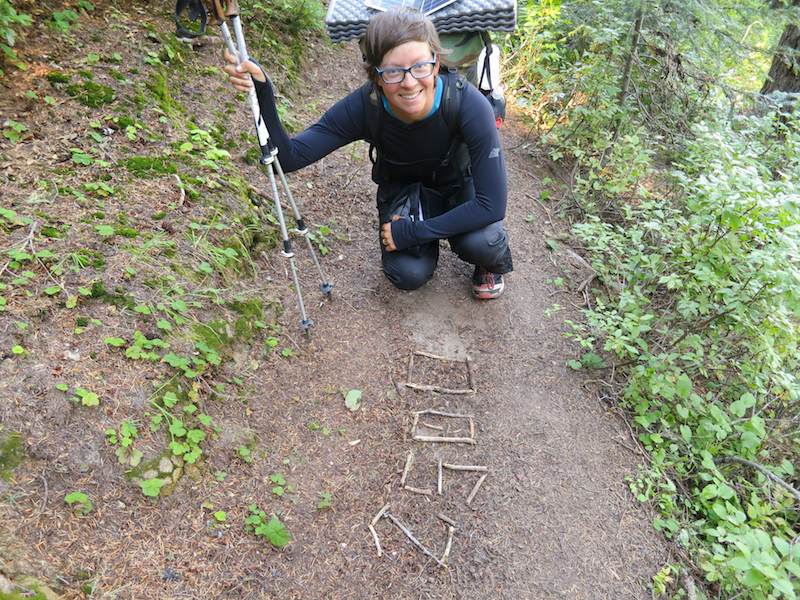
Wearing the EMS Techwick Lightweight Crew shirt and Patagonia Houdini Pants for warmth while walking in Washington.
When I entered the Sierra, I wanted to have a heavier long sleeve shirt, so switched from the EMS polyester to an Ibex Hooded Indie, and LOVED IT. I kept it all the way to the border, I loved it that bad. The hood was just so warm and comfy, it also had thumb holes, and the mid-weight (195 gm) merino wool was durable.
The Verdict: For bottoms, I loved the lightweight but not ultra lightweight (200 gm) Icebreaker Oasis Leggings, and would carry them the whole way next time. I would start with a lightweight polyester like the EMS Techwick Lightweight Crew or 150 gm long sleeve merino wool shirt for the beginning of the hike, and switch to the heavier Ibex Hooded Indie in the Sierra again.
Wind Shirt & Pants
I started the hike with a poncho-tarp and no raincoat, so my Montbell Tachyon Anorak windshirt got a lot of wear. It’s incredibly lightweight, and super durable — no tears or stains. It cut the cold on windy ridge-walks throughout Southern California, and I would definitely carry it again. The only negative was that the hood would catch wind easily and billow out into a space-helmet-shaped globe if I wasn’t careful about adjusting it to my face.
At Agua Dulce, the British hiker Will let me try on his rip-stop nylon Patagonia Houdini Pants, and finding them comfortable and suitably light, I got myself a pair that I carried from Tehachapi to Canada. These pants were great for slipping on during breaks for warmth, wearing during glissading, protecting skin from poison oak or post-holing, and looking like a ninja. I did tear a few holes in the seat of my pants when I fell on Glen Pass, but I easily repaired those with nylon tent patches in Lake Tahoe.
Both these items are mens/unisex only, so there’s no real shaping to accommodate women’s bodies. I found the pants (in size small) real tight in the seat until about Oregon, when I think I had lost some weight on the hips that made them fit better.
Verdict: I would carry both the Montbell Tachyon Anorak and Patagonia Houdini Pants again, the whole hike.
Warm hats
I started with an EMS fleece headband, and that was sufficient until the Sierra. I mail-ordered a Smartwool Reversible Training Beanie in their 195 gm merino wool, and carried that the rest of the trail. It was okay, I guess. Kind of thin. It was light, and between it and my buff, my head was never uncomfortable. It wasn’t particularly cozy, though, which would have been nice for morale.
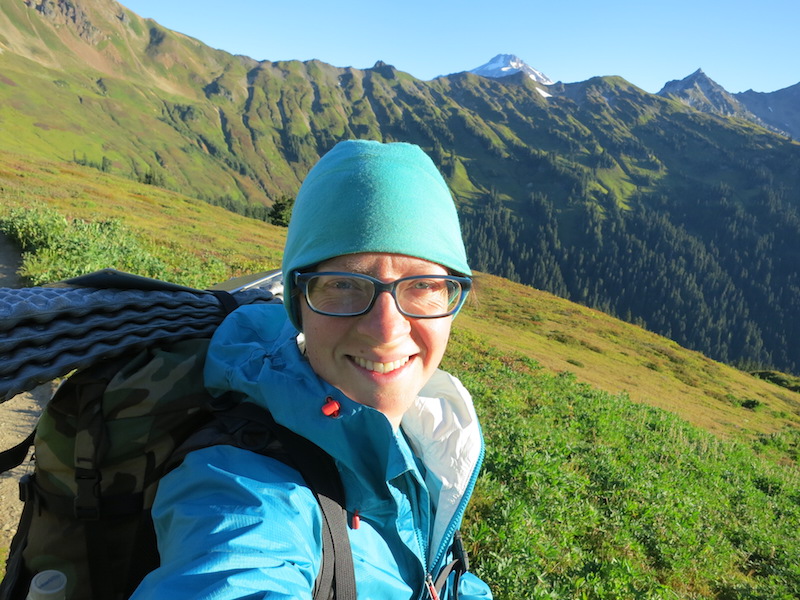
Wearing the Smartwool Reversible Beanie and Patagonia Torrentshell rain jacket on a cold morning, near Glacier Peak in Washington.
The Wool Buff was a last minute, very good purchase. I don’t remember when I had Russell mail it to me, probably at Kennedy Meadows. It worked as a scarf, as a second hat, and as a pot cozy for finishing cooking. It didn’t tear or stain at all, even with all the food I spilled on it. I loved it on the hike, and wear it now IRL.
The Verdict: With the short hair that I had, I would carry the Wool Buff the whole way to provide extra neck warmth. You could probably skip it for warmth with long hair, though I might carry it anyway for pot cozying. I would probably carry the Smartwool Reversible Training Beanie again, unless I found something cozier that wasn’t too too heavy. Maybe a lightweight polyester fleece hat that tied under the chin?
Puffy
I started out carrying the puffy I’d picked up for the JMT two years prior: a Montbell Ultralight Down Vest. I like vests a lot — they keep your trunk warm but let your arms stay unencumbered. This one was great for me through all of Southern California, and between it, my long underwear, and my wind shirt, I was never too cold. I was also not super warm when I wasn’t in my sleeping bag.

Having breakfast at the Sweetwater Cafe in Agua Dulce, wearing the Montbell Ultralight Down Vest over some loaner clothes.
Right when I was in Lake Isabella, 50 miles before Kennedy Meadows, there was a snowstorm with white-out conditions over Forester Pass. After seeing pictures online of hikers wading through snow fields, I made a decision to get a warmer puffy with sleeves for the snowy Sierra. I found a deal on a down Rab Microlight Jacket and had it shipped to Kennedy Meadows and carried it the rest of the way to Canada.
The only downside to this jacket was discovering that the lining was a shocking pink color, which I decided was a feature — you can signal a rescue chopper with magenta! The warmth, fit, and length of this jacket were all great. I might get one with a hood if I had to replace it and was feeling super luxurious.
The Verdict: Loved the Rab Microlight Jacket and would get it again. It was great to have in the High Sierra, when I was camping before dark to set up for the passes and had some sitting around to do.
Raincoat
Instead of a tent, I carried a poncho-tarp and bivysack for the first 550 miles of the trail. The poncho-tarp was to be my raincoat, and as I didn’t have any real precipitation during that whole section, who knows how it would have performed. When I decided to carry a tent instead of the tarp, I brought on my two-season-old Marmot Crystalline rain jacket as well. This jacket did fine, until I had to wear it for extended hours while hiking in Oregon. Then it shredded, and when it shredded, it shredded HARD. First the back of the neck lost water resistance, then the armpits started tearing.
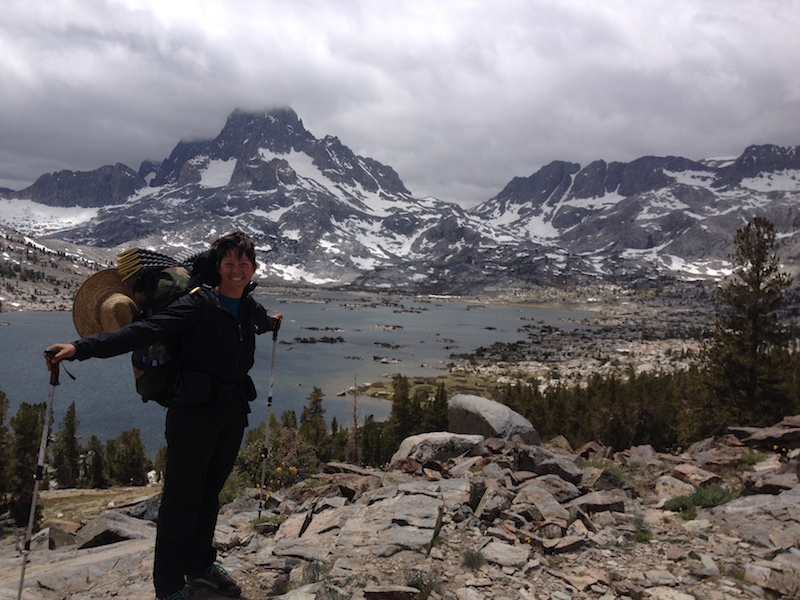
Wearing the Marmot Crystalline Jacket and Patagonia Houdini Pants for warmth at Thousand Island Lake.
By the time I got to Bend, the armpits were naturally vented through large tears on each side that were working their ways to the tops of the shoulders. This actually wasn’t terrible, but the neck leaking was super unpleasant, so I looked for a new one in town. I found a serviceable lightweight jacket in the Patagonia Torrentshell, and that did me fine up through the end of the trail. It performed as expected — no leaks, no tears. Kept rain off me. My only issue with it was that it was quite a bit heavier than the Marmot jacket.

Wearing the Patagonia Torrentshell for warmth and drizzle-protection, a few minutes from the end of the PCT.
The Verdict: While I use the Patagonia jacket here at home quite a bit, I would look for a lighter jacket next time. Perhaps one of the cuben fibre ones going around? Or a new Marmot Crystalline.
—
And there you have it — all the clothing I wore on the PCT during my 2014 thru-hike.
(You deserve a medal for thru-reading this post.)
If you have any questions about clothing on the PCT, leave them in the comments and I’ll do my best to answer them.
See my gear reviews here: the Big Three (tent, sleeping bag, pack) and the little stuff (food prep, water treatment, snow gear, etc.).
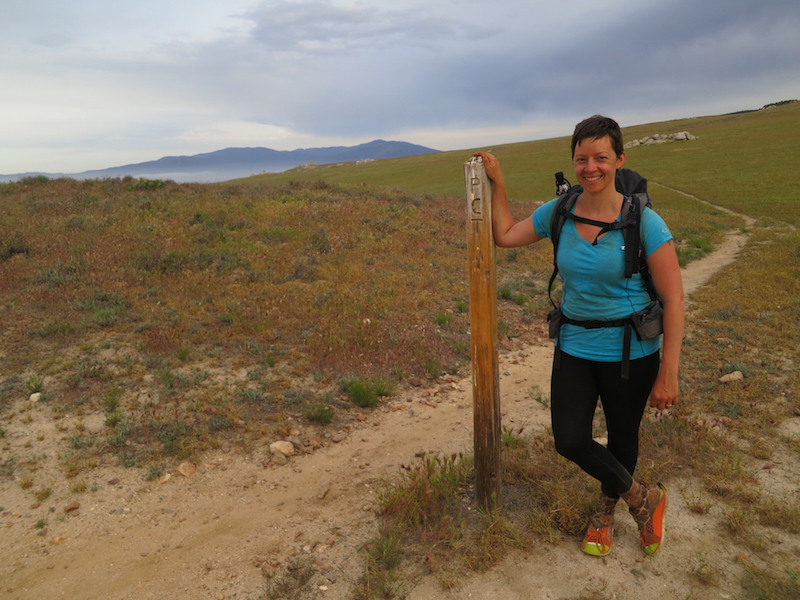

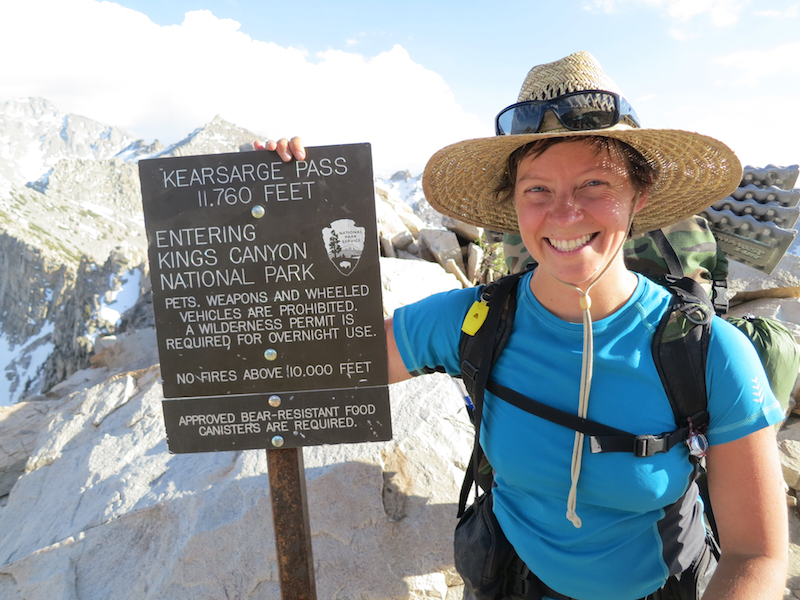
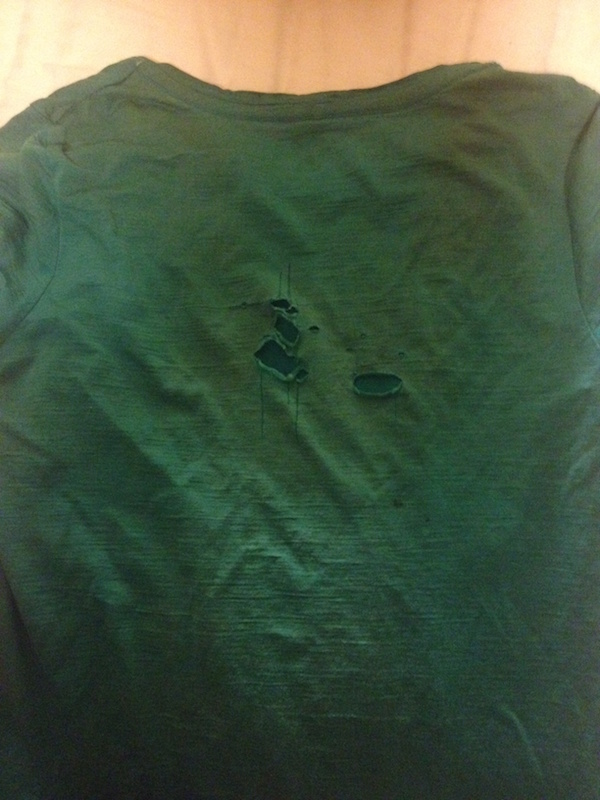
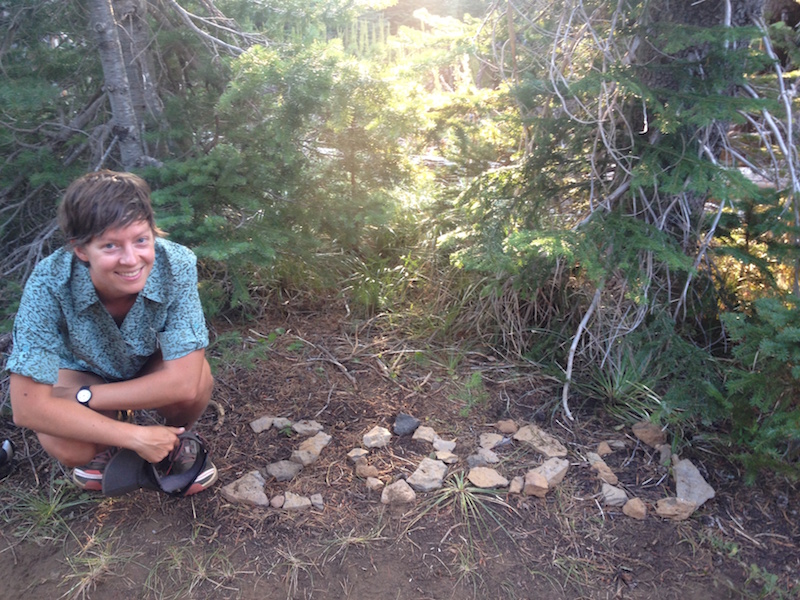


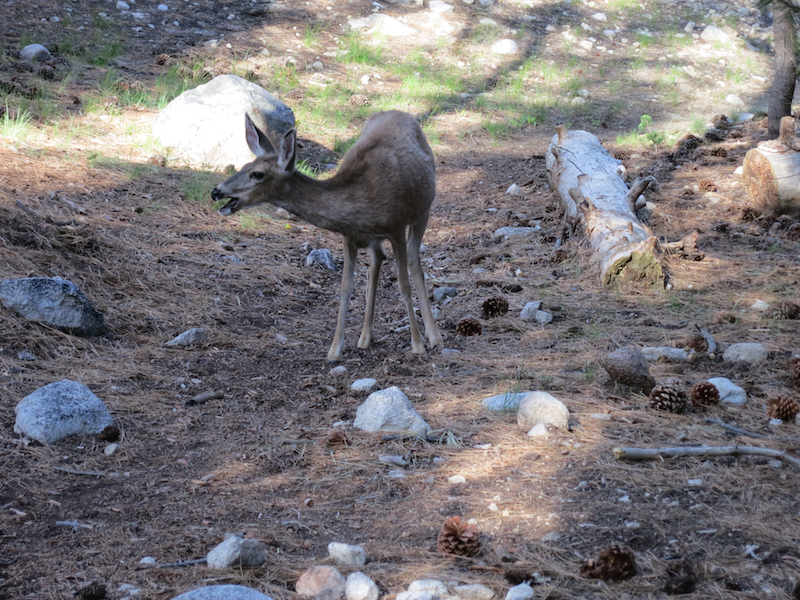
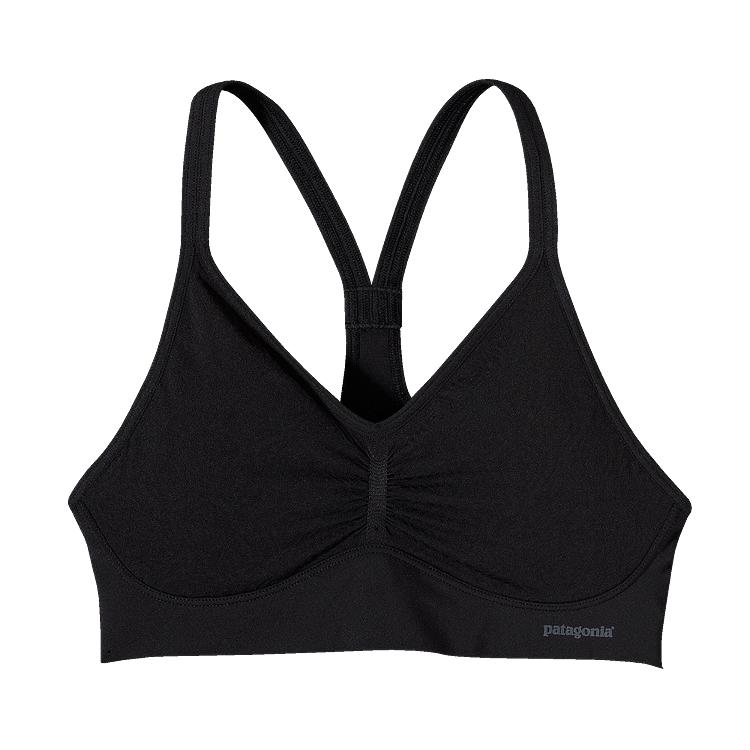

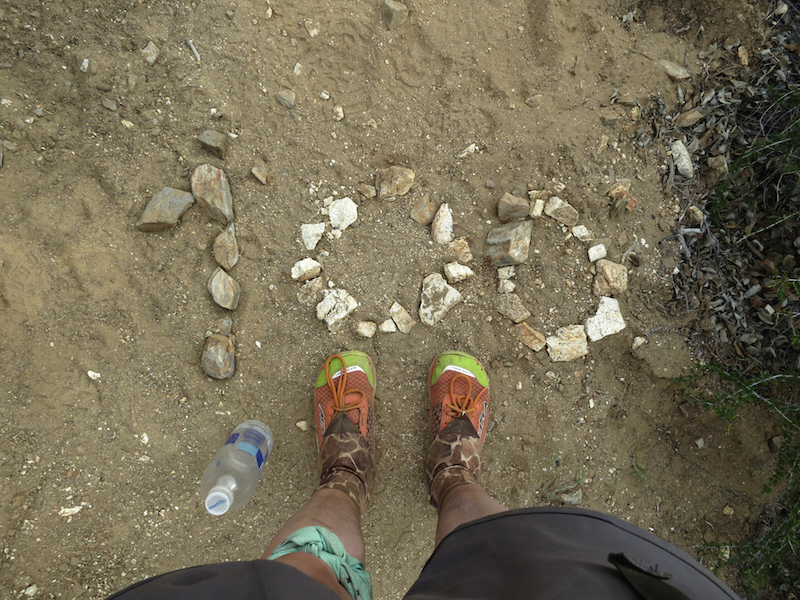
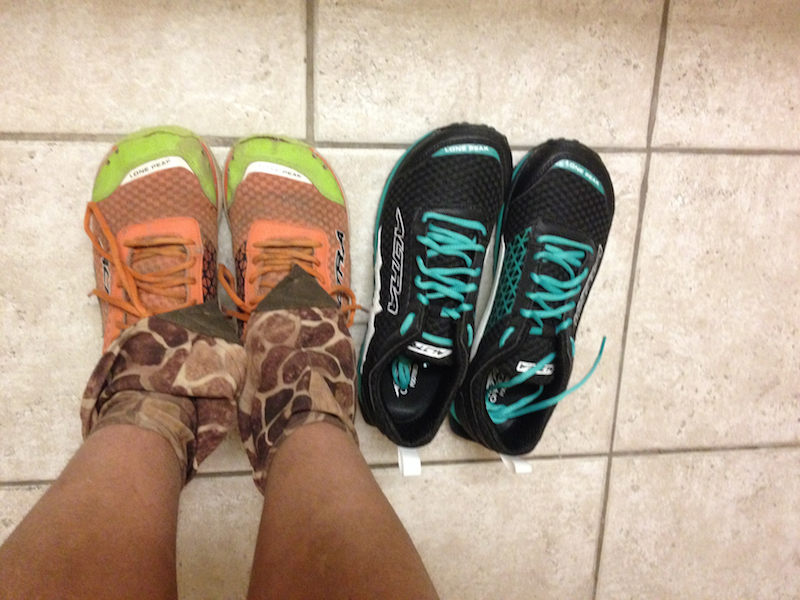
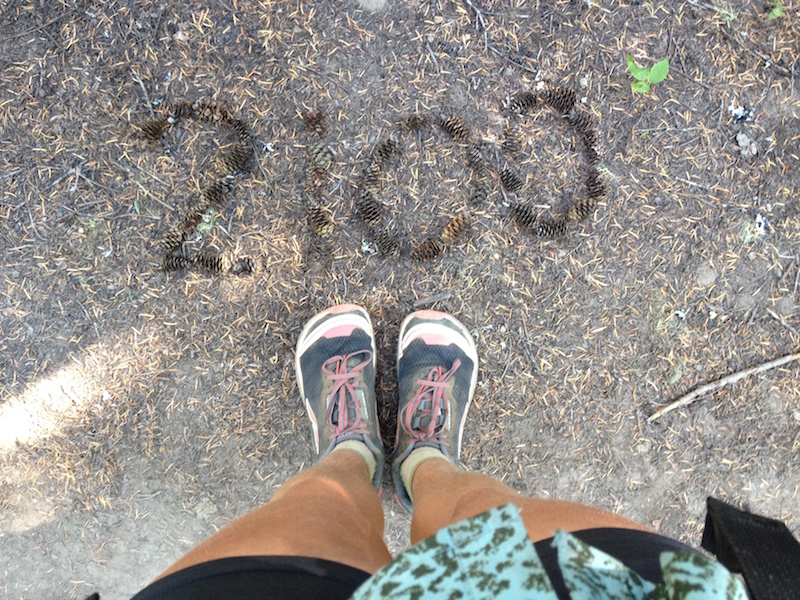

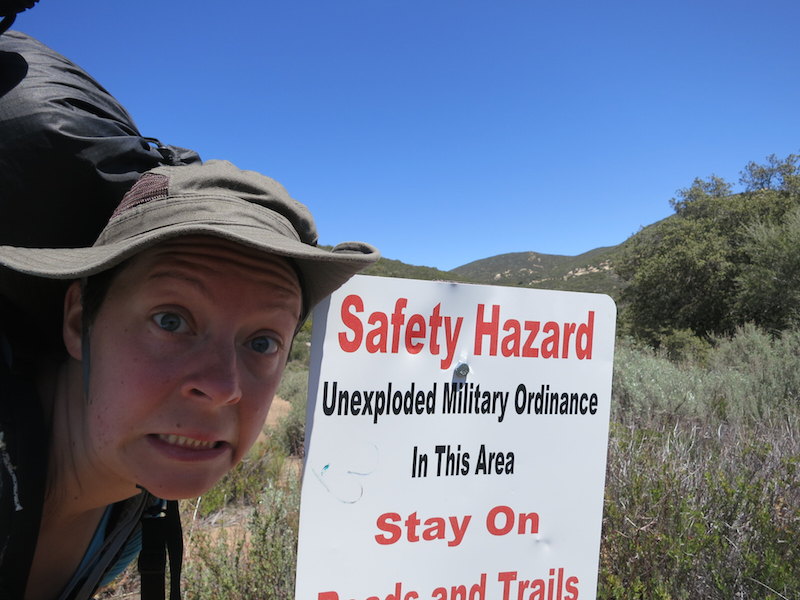

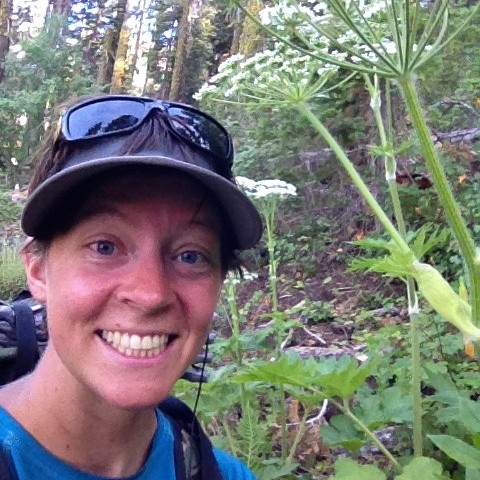
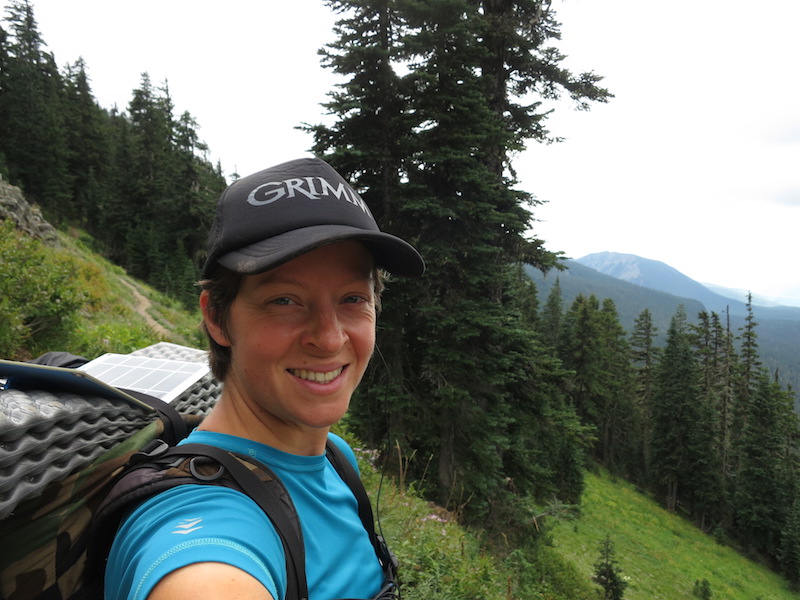
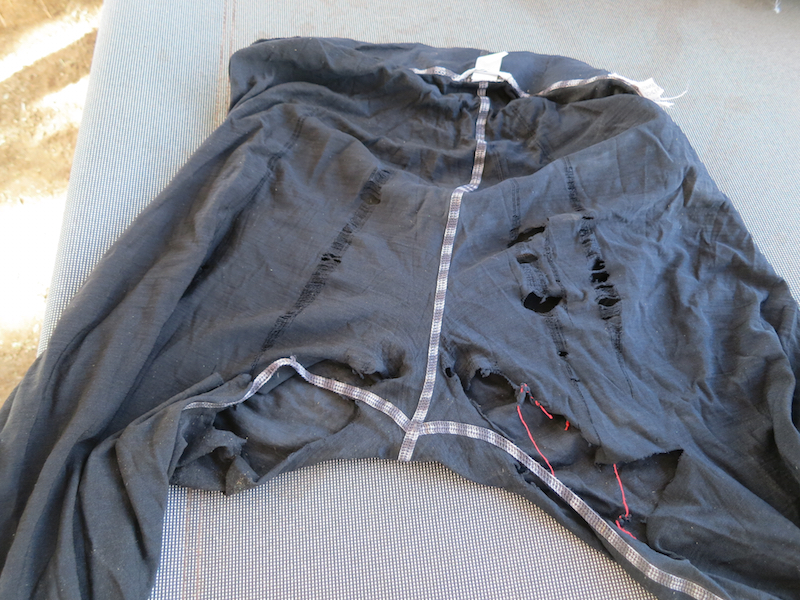
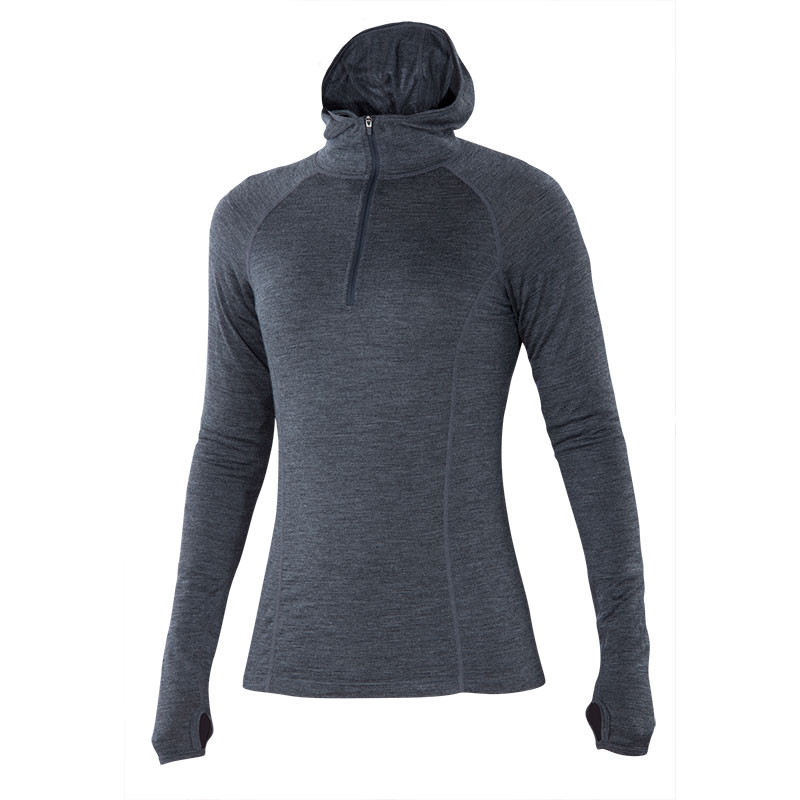

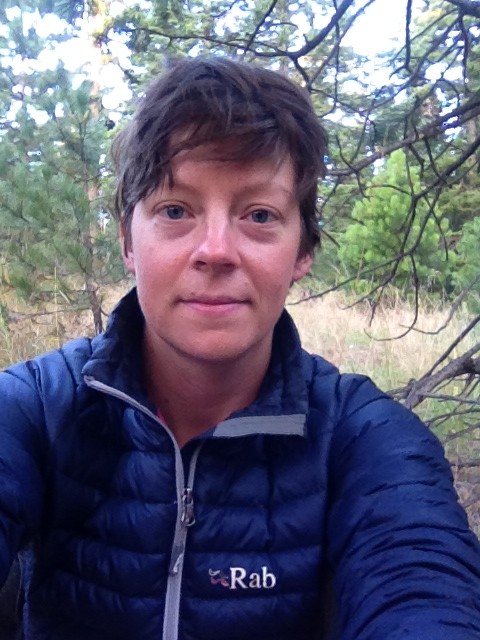
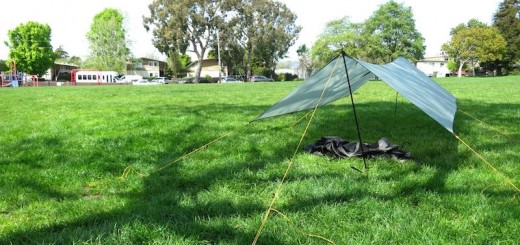

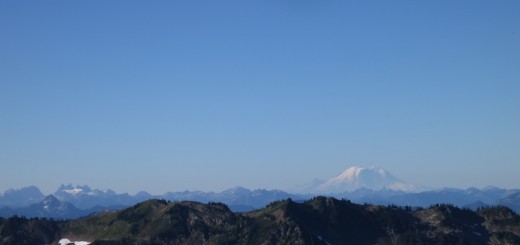


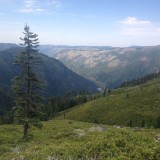




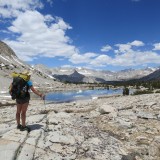
WOW!
Thank you for all the details that you wrote about what you wore and how the items worked out for you. I greatly appreciate the time that you took to critique each item.
I am a larger size woman…think short squatty body type…and it is a royal pain in the butt to find clothes that work for me. Men sizes are out of proportion. Women sizes too small. It sucks.
It is like, no heavy set women hike (well, once I start hiking I do lose the weight), which isn’t true, but the manufactures of good quality clothing act like there aren’t any.
So I spent my summer of 2014 wearing one skirt the entire 500+ miles I hiked in France and Spain.
I’m thinking I’m going to be wearing the same one on the PCT.
Did you see any other women who are heavier set out on the trail? Know of any brand of clothing that accommodates plus size women?
Thanks again for writing your post
Shawna
I definitely saw heavier-set women (and men) on the trail! I can say that some brands run super small Icebreaker in particular seems to be sized for … elite marathon runners? I started the hike at 5’5″ 145 lbs, size 6 or 8 pants, and the size medium long underwear bottoms were super tight at 450 miles in. If I should have been in a size L, I doubt the XL would accommodate much over 10 or 12.
Icebreaker in particular seems to be sized for … elite marathon runners? I started the hike at 5’5″ 145 lbs, size 6 or 8 pants, and the size medium long underwear bottoms were super tight at 450 miles in. If I should have been in a size L, I doubt the XL would accommodate much over 10 or 12.
I do remember seeing plus size clothing at Athleta, and I’ve at least had good luck with their sports bras. Their spandex-y tights go up to 2X.
If you like hiking in skirts, that’s an option for the PCT for sure. I saw several women hikers wearing them (I think Rambling Hemlock is one, and has a blog you can google for), and a few men in kilts as well. If you haven’t already tried it, you might like spandex long enough to cover the thighs to prevent chafing. I carried Body Glide that helped with that too, but preventing rubbing is the most useful for me. Until you get those lovely purple calluses and stop feeling anything…
What kind of skirt did you wear? I tried one before the PCT and had it stretch out on a training hike (damn wool again…). Would like to try again with a different material.
Hi Shawna,
I started the PCT as a size 18 (2660 miles later and I had to buy a whole new wardrobe!). To get outfitted for the hike, I found that REI has plus sized options (http://www.rei.com/s/womens-plus-size-clothing), and got some of my clothing from junonia.com. You should also keep an eye on geartrade.com. It is a great marketplace of used items. You should go there first for things like shorts and short sleeve shirts because trust me, your size will change. I ended up buying new shorts every month – not because they got shredded, but because they just wouldn’t stay on. Good problem to have, though.
Finally, no matter what you buy, be sure to stick with Penguin’s advice about getting quality wool products (Ibex is best), or poly that is treated to not smell (like RAB).
Good for you for hiking the PCT! It will absolutely change your life!
– Jill (Trail Name ‘Port’)
Thanks so much for this post!! It was so helpful
I also wanted to wear an Icebreaker 150 merino wool as my hiking shirt, but you have convinced me not to, because of the shredding. It’s soooo thin, I am not surprised. I really wanted to stick with wool, but I fear that 195 merino (and def 250) would be way too warm for my summer mountain through hike (not PCT). So maybe I need to start looking at synthetics as well. Did you consider a Capilene 1 or 2 for your hiking shirt, by chance? Have you found any good LS button downs?
I was lucky to find a bra I loved on the first try! The Icebreaker Sprite sports bra. It’s just perfect
What did you think about your Rab Microlight Alpine? That is warm and cozy, but it’s kind of a heavy piece! Did you find it was worth it’s weight? What about the hood? It sounds like you would buy a down puffy with a hood next time? (I am in the middle of the Great Hood Debate–too many hoods, or not enough?) Did you ever use this hiking, or was it for camp only?
Thank you again so much for this post!!! What a pleasure to read and I like your laid back attitude
Hi Sonnie, glad to be of help! Yeah, the wool stuff is hard. I think it’s fantastic for warmth, love it for sleep wear or base layers while standing around, but as a solo layer under a pack, it was just not durable enough for the price point. I didn’t consider the Capilene layers before my hike, as I was 100% merino focused. I lucked into the Rab Aeon tee that worked so well for me, ’cause it was the cheap option in a color I liked at the store. I’ve heard good things about the Capilene layers, so that sounds like a great thing to try out. As for LS button down, I got a strong recommendation for the Columbia women’s silver ridge button down from a fellow thru who wore the mens version. He said it lasted the whole hike, breathed well, and the plaid hid the dirt.
The Sprite is great! I tried one before my hike and was between sizes, but suspected it would have worked out great on the trail.
I really like the Rab jacket, but you’re absolutely right that it’s super heavy (~12 oz). It was the only one I could find to ship to myself overnight right when I needed it, which is how I ended up with it over say a Montbell UL Down Parka at ~8.3 oz. If I were buying it ahead of time, I’d definitely go lighter (probably Montbell). I never hiked in it, as I wanted to avoid getting sweat on it. For warmth while hiking I layered a wind shirt or rain jacket over my base layer; that was always sufficient.
Another note on hoods — they can be part of a system. Some of the lightest sleeping bags on the market don’t have a hood (the Zpacks bags), so having a hood on your puffy would make sleep a lot more confortable. My sleeping bag had a nice hood and neck baffle, so the hood would have been less necessary. If I use the quilt again, a hood would be nice… You gotta know what other items you have with you, and how much having a cold neck detracts from your hike
Alice, Thank you so much for this amazing PCT gear overview – one of the most helpful I’ve ever read. I agree with you about the Ibex Indie Hoodie – I find the material weight and weave to be a perfect combination of durability + warmth over a broad range without being too hot. Any lighter weight merino wool fabric just doesn’t last. Quick question about the Houdini pants sizing – I’ve been using the Houdini Hoody for years and love it and thinking about picking up the pants to wear over hiking pants or base layer for a quick boost to warmth in the mornings and on ridges. I’m a size 8, 125 lbs, and have curves and find that the Men’s Small fits over my hiking pants (Patagonia Tribune) and are fine everywhere except that they are snug though not tight in the seat. I think a unisex Medium will just be too large. Did you try the Medium and were you swimming in it?
I did try the mediums, and I was also swimming in them. The smalls were a bit tight to start (picked them up in Tehachapi), almost difficult to get on over my butt. By the end of the trail, I could pull them on fine. It sounds like you might be similarly sized to me and I think we’re just between sizes for the Houdini pants. Another option, if you could find them in person to try on, would be the Montbell Dynamo wind pants. Also unisex, probably in medium since Montbell runs small. Never tried them myself, but I love my Tachyon Anorak windshirt from them, so have a lot of trust for their manufacturing.
Thank you again for the Houdini sizing advice (it’s not tight, just snug, I should be happy it fits) and again for all the fantastic recommendations here that I’m still digesting. This review was so good that I can’t wait for your PCT 2014 Gear List. Please please post soon : ) Especially interested in your current choice of pack, shelter, quilt/sleeping bag and sleep pad.
Thanks for writing such a thorough review! I’m hiking the JMT this summer and I found this post while looking for gear ideas. Your thoughts on the merino wool vs polyester were especially helpful.
I thought it would be helpful to share that Rab base layer fabric aren’t the same as regular ol’ polyester! Its Polygiene, polyester treated with natural silver salt for odor control. Rab also uses a blended fabric called MeCo in other shirts, which is a combo of Merino Wool and Polyester treated with Cocona, also for odor control. Anyway, I found this great video review on the difference between various base layer fabrics (merino, polyester, blended, etc) that I found really helpful. Thought it was worth sharing:
http://youtu.be/n5L2_Dk445c
I’ve been reading PCT blogs, section hiker blog, thru hiker blog… so nice to find women are solo backpacking! I’m trying to get back to backpacking after many years of health issues. I started backpacking in the mid 80’s. Things/equipment have changed radically since then. I’ll be stuck with using much of my old equipment, no $$ to replace. But I’ll be starting with short overnighters, a couple of days… IF I can do that, then I’ll start replacing things one at a time. Thanks for all the gear lists… especially enjoyed the Small Things (most blogs I’ve read don’t show the little things). I am rethinking everything I learned in the 80’s (then it was BRAWN to carry heavy packs) and start thinking BRAINs to lighten the pack. I’m struggling over what clothes… this blog has been very helpful. Thanks for the inspiration.
Hi Alice, the level of detail you provided in this post was extremely helpful. I am working on putting together a clothing system for a PCT thru next year. Almost everyone’s lists include base layers for hanging around in camp and sleeping. I’m questioning whether to bring base layers at all at the beginning, and only get them sent to me when I feel I need them. I’d like to run my plan by you and see what you think. I’m a cold sleeper and am looking at using a tent, getting the WM versalite (10 degree), which is only a few ounces more than the ultralite (20 degree), plus I’d like to use a 4oz silk liner (not only for warmth, but also keeping the expensive bag in good condition!) and an inflatable sleeping pad. All this together I’m hoping will be a pretty warm system (being unable to get warm while inside my sleeping bag is probably my biggest fear). For hiking clothes at the start, I’m looking at taking a long sleeve wicking/vented/sun protection shirt, light vented pants, wind pants, wind shirt, light rain jacket, and the Montbell UL down parka. I’ll also have warm accessories like gloves, warm hat, buff, sleeping socks. Considering all this, do you still think I’d be wise to carry top, or bottom, or both, wool base layers, or would they be superfluous? Or would you recommend having base layers and changing some parts of my proposed system to make it more weight-efficient? I’d appreciate your advice so much.
Hi Caitlin! Sounds like you’ve put a lot of thought into your sleep and clothing systems. I would recommend having a base layer from the beginning. Southern California can get really cold at night. The base layer will do two things: 1) be dry clothes to change into if you get soaked during the day, and 2) be a set of sleep clothing, which will help keep your sleeping bag clean, potentially doing away with the need for a silk liner.
As for material, wool is nice, and since you’re not hiking in it, you can get away with the really thin (i.e. light) stuff. You’d probably also be fine with synthetic, since the Versalite is a super warm bag.
I found wind pants handy because I hiked in shorts. If you’re hiking in long pants, you might not end up using wind pants, as they mostly keep your bare legs from getting too cold in high wind. Same with the wind shirt — I wore a tight-ish short sleeve shirt and the wind shirt blocked the wind on my bare arms. If you’re hiking in a long sleeve shirt, you might not need the wind shirt.
Wind shirts and pants are super light though, and there’s no shame in taking it with you, then sending it home if you don’t use it.
Warm hat, gloves, buff are all good. I liked having sleep socks when it got cold in WA, and I made sure to NEVER hike in them, so they’d always be warm and clean.
I’m jealous of your Montbell parka — sounds great!
Hi Alice! Thank you so much for this insight, especially on the bras and shorts–I’m planning a 2016 thru-hike and this was a great read to figure out where to start clothing-wise.
On a completely unrelated note yet in an attempt to be helpful: those tall flowers in your hats subheading actually look like giant hogweed–stay away from those (in the future)! When their sap comes in contact with human skin and then is exposed to UV sunlight, can lead to severe burns/blistering.
Thank you so much for this post! Your writing is truly an inspiration and I am excited to embark.
This is SO SO SO helpful! I plan on hiking the PCT 2017 but have a 40% off code to Patagonia right now… Any great suggestions for jackets from there other than the toerrentshell??
Loved this article, thank you
Thanks Emily! I really love the lightness of the Patagonia Houdini pants, and I’ve heard great things about Houdini jacket, so I’d recommend that jacket (though not from personal use). I’ve also heard good things about the Nano Puff jackets. I’d probably go with something besides the TorrentShell for rain next time actually, if I were going UL (it’s 12 oz!). Have fun with the coupon!
Wow, I was fully captivated while reading this. I literally lost track of time, oops! This is one of the best blogs I’ve read and you have answered so many questions I had roaming in my mind. Thank you thank you thank you!
Thank you so much for your amazing reviews!! I am planning a 2018 thru hike and would love to know where along the trail you sent yourself new shoes (To which places). I have hiked in the altra lone peaks for the JMT and they lasted fine the whole way, but not sure they would make it all the way from the border to Kennedy Meadows. I am having a tough time figuring out the best places to send myself the new shoes. Any advice would be much appreciated. Thanks again for all your great posts! I always tell other hikers looking to do the PCT about your blog!
Just a quick comment about the Oiselle running shorts. I traveled the trail with a gal that brought along two pairs of the “Flyout” style of short. She wore them just about every day until WA. The first week in the deserts of southern California, she had an small issue with chafing in the inner thigh. I had a small container of ointment she used to treat it. She never had an issue on wards. I seams like this type of short “cut” tends to ride up after awhile
“Düzen, zamanı verimli kullanmanın anahtarıdır.” – Benjamin Franklin
Sende anlat ile düşündüren konulara, motivasyonlara ve genel olan herşeye erişebileceksiniz. Hemen gelip sitemizi ziyaret edebilirsiniz.
I’m going through the gear lists for my 2024 hike and this was very useful! Thank you so so much!
I used to think I had it bad because I had no , then I met a man with no.
Pay Tahsilat, online ödeme sistemi sunmaktadır. Sanal Tahsilat hizmeti sunmaktadır.
Thank you for the great post! We at Trwin really liked it.
Thnx!? ip stresser